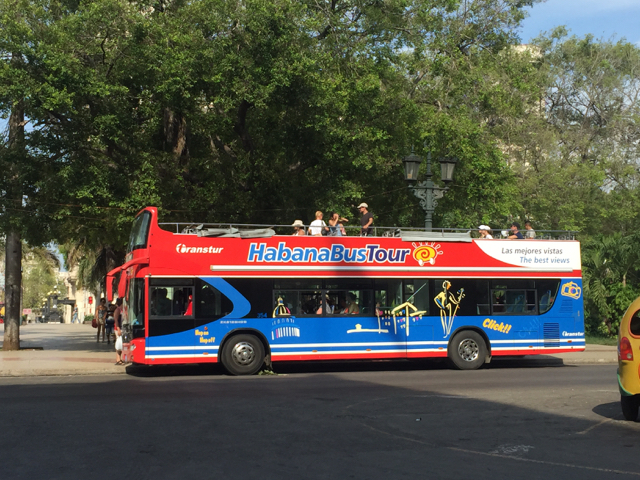On July 20, 2015, the Cuban embassy in Washington DC was reestablished after 50+ years. Meanwhile, US intersection opened in Havana, Cuba on the same day. I happened to witness this historic moment with some Cuban artists at their studio in Havana. Their reaction to the events was overwhelming! They were singing, clapping and in tears to see the Cuban flag being hoisted on US soil once again. The general feeling I got was that they were overjoyed to be finally accepted as a legitimate country by their neighbor, especially when most Cubans have relatives living in the US. Watch this video of people’s reactions. 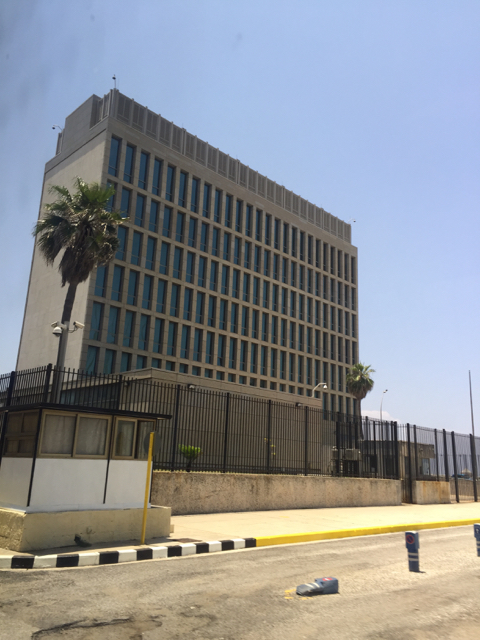
I spoke to many locals to understand how they think Cuba will change as a result of lifting of the embargo and when American businesses were allowed to come to Cuba. There were mixed reactions. For most people, it was a welcoming change from being isolated and they were excited to get more access to resources. Because of limited trade, there is not much to buy in Cuba. Cars are recycled for decades, clothes are handed down through generations, and food is rationed. I have only seen one place that would resemble a tiny shopping mall, as we know it here. Even the artists I met said they cannot buy materials to make their little souvenirs – clay statues, cloth dolls, silver jewelry.
Tourism will thrive of course, and everyone from bartenders and servers, to taxi drivers and shopkeepers will make more money. Already, over 2 million tourists have visited Cuba in the first half of this year. The guides tell me they have not had a slow season so far, while in the past, traffic declined in the summer months due to the heat. Increased tourism has come with its perils – more traffic and pollution. Walking along the Malecon, I saw cigarette buts and garbage dotting the entire pathway.
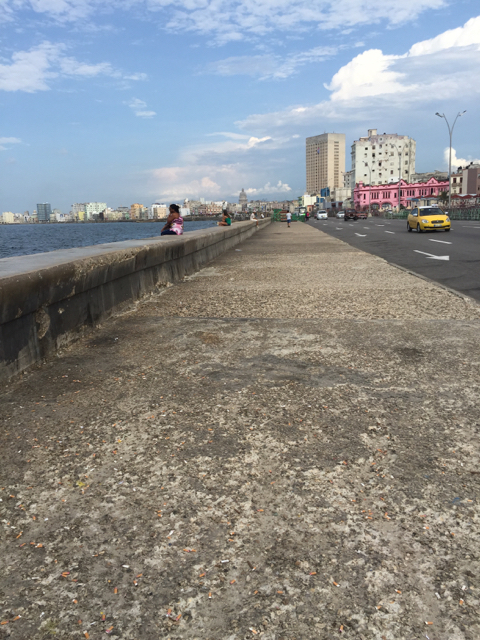
The Cuban infrastructure is not yet setup to support an influx of visitors. There are limited number of hotels, many of which are in need of renovation. Power cuts are frequent. Service needs improvement. One change I did notice was the lower cost of internet – $2/hour as oppose to $8/hour when I first visited two years ago. There is also a hotspot in Vedado for locals to access wifi now. Most people I met had an account on Facebook.
An older gentleman did not seem very thrilled with the prospect of Cubans being exposed to American culture. He said he wouldn’t want to see any drugs, prostitution and fast food coming into Cuba as a result of open relations. Note that currently there is almost no crime in Cuba. It is very safe to walk around alone even in the night, although this time I saw more beggars and street peddlers. The Cuban population is already seeing an increase in heart disease, obesity and HIV. If you go to a Cafeteria (where the locals eat), you will find mostly pizza, burgers, ham and cheese on the menu. He feared that increasing the access to packaged foods would only create more health issues.
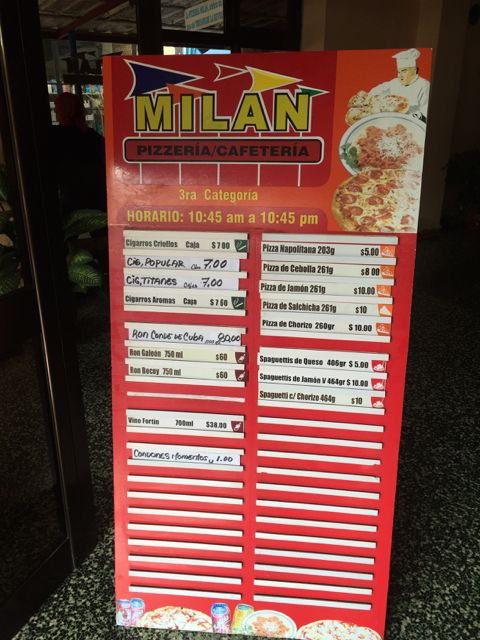
An owner of a private restaurant known as Paladar was super excited for he can travel to the US more easily. He said that didn’t bother to apply for a visa before because the process could take 2-4 years. Now with the embassy opening, it would be much faster. It would also be good for business, although he notices increased competition as many more restaurants have opened up in Havana within the past few months.
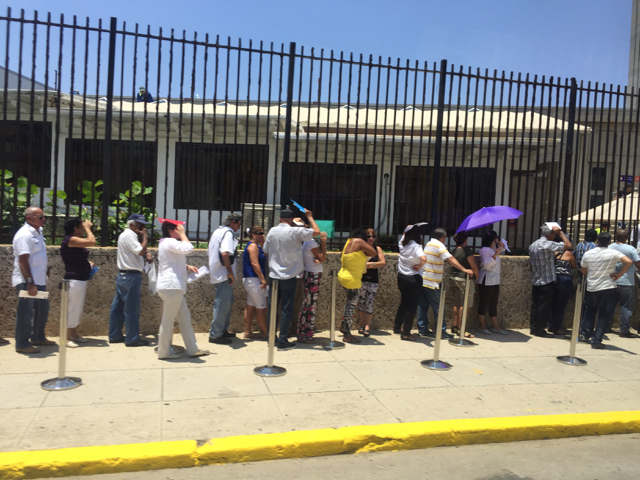
One of the doormen at a popular restaurant in Havana said personally the changes won’t affect him so much. He is a psychotherapist and makes the average living of a doctor i.e. $50/ month. He is passionate about his profession but can’t make ends meet for his family of four, so works illegally as a doorman at night. (Legally, doctors in Cuba cannot work a second job as they should be in top mental and physical condition). He wasn’t hopeful that doctors would make anymore in the near future, and he wasn’t open to the idea of switching his career to wait on tables (currently, artists and waiters earn the most income).
I would have to say that Cuba is definitely changing. The old classic American cars from the 1950’s still exist, but new imported cars and hop-on-hop-off buses are slowly replacing them. Streets are begging to fill with cafes, restaurants and souvenir shops are tourists from all over the world are flocking to get a last glimpse of time capsuled Havana.
